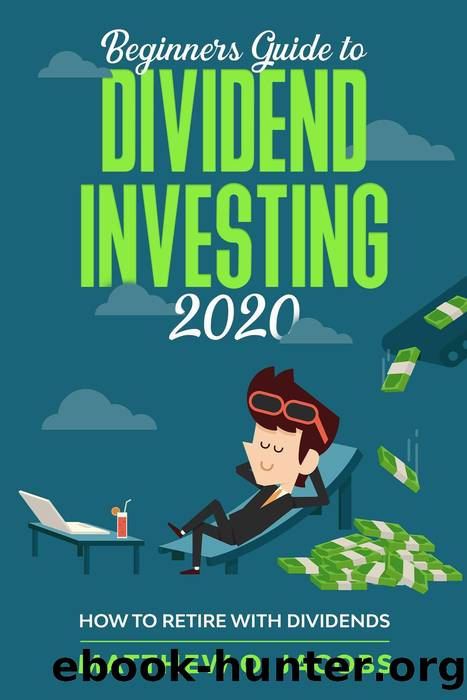Beginners Guide to Dividend Investing 2020 by Matthew O. Jacobs

Author:Matthew O. Jacobs
Language: eng
Format: epub
Tags: dividend investing books, dividend investing step by step, financial freedom, passive income, dividend investing for beginners, dividend investing 2020, retirement, retirement planning books, stock market investing for beginners, high profitable stocks, dividends
Publisher: Matthew O. Jacobs
Published: 2020-07-27T00:00:00+00:00
Chapter 8
How I select shares â When I sell shares
If you want to invest in companies, you are always faced with the problem: Which company? How do I find it?
There are as many approaches to this as there are shares. Everyone will have to find their own way in the course of their investment career.
Since I do not speculate on price gains, but rather aim for a long-term investment that pays me a regular dividend and I would like to keep it forever, I have chosen an approach that uses the dividend as the main criterion. For this purpose, I have worked out a list of questions according to which I assess a company and whether I am ready to invest. Once I have found a possible candidate, I simply work through the list.
1. Does the company pay a dividend?
Quite trivial, but easy to answer. If not, the case is closed.
2. Since when does the company pay a dividend?
The longer the better. I prefer companies that have been paying dividends for at least 10 years without interruption.
3. Is the dividend increased regularly?
Companies that regularly increase their dividend and have not made any cuts in recent years suggest that they will continue to do so, at least in the near future. McDonalds, for example, has increased its dividend every year for 38 years.
4. How strong are the increases?
It makes a difference whether the dividend has been increased by an average of 5% or 15% over the last 10 years. If a company pays 1$/share, a 5% increase would result in a dividend of 1.63$/share and a 15% increase would result in a dividend of 4.05$/share. A big difference!
5. What does the company do?
Here, ethical questions play a lesser role for me, but much more, do I understand the product? Is it also consumed in economically bad times? Does the product have a future or can it be easily replaced? I have no idea about biotechnology and genetic engineering, but let's take diapers. There will always be babies and the first 2 years of life the little ones always need something to "clean up". They don't care about the economic situation and the reusable cloth diaper is probably obsolete.
6. Will the company survive the next few years?
The best carriage manufacturer in the world was literally crushed by cars at the beginning of the 19th century. People always eat and drink, I guess. However, if the carriage manufacturer was clever, adapted and produced car parts, it would not have been the worst.
7. Does the company still have growth potential?
As a rule, I invest in established companies that have been active in the market for decades. They have already passed the storm and stress phase. I can no longer expect annual growth rates of 30%, 40% or 50%. I am aware of this, but the worldwide market penetration should not be complete yet. China, India and Africa are catching up with the industrialized countries. Billions of people live here who can increasingly afford Western products.
Download
This site does not store any files on its server. We only index and link to content provided by other sites. Please contact the content providers to delete copyright contents if any and email us, we'll remove relevant links or contents immediately.
| Budgeting & Money Management | College & Education Costs |
| Credit Ratings & Repair | Retirement Planning |
The Compound Effect by Darren Hardy(8870)
Tools of Titans by Timothy Ferriss(8304)
Nudge - Improving Decisions about Health, Wealth, and Happiness by Thaler Sunstein(7657)
Win Bigly by Scott Adams(7139)
Deep Work by Cal Newport(6966)
Rich Dad Poor Dad by Robert T. Kiyosaki(6513)
Principles: Life and Work by Ray Dalio(6296)
Pioneering Portfolio Management by David F. Swensen(6256)
The Barefoot Investor by Scott Pape(5719)
Digital Minimalism by Cal Newport;(5704)
Grit by Angela Duckworth(5555)
The Slight Edge by Jeff Olson(5376)
Discipline Equals Freedom by Jocko Willink(5336)
The Motivation Myth by Jeff Haden(5175)
You Are a Badass at Making Money by Jen Sincero(4892)
The Four Tendencies by Gretchen Rubin(4577)
Eat That Frog! by Brian Tracy(4483)
The Confidence Code by Katty Kay(4220)
Bullshit Jobs by David Graeber(4140)
